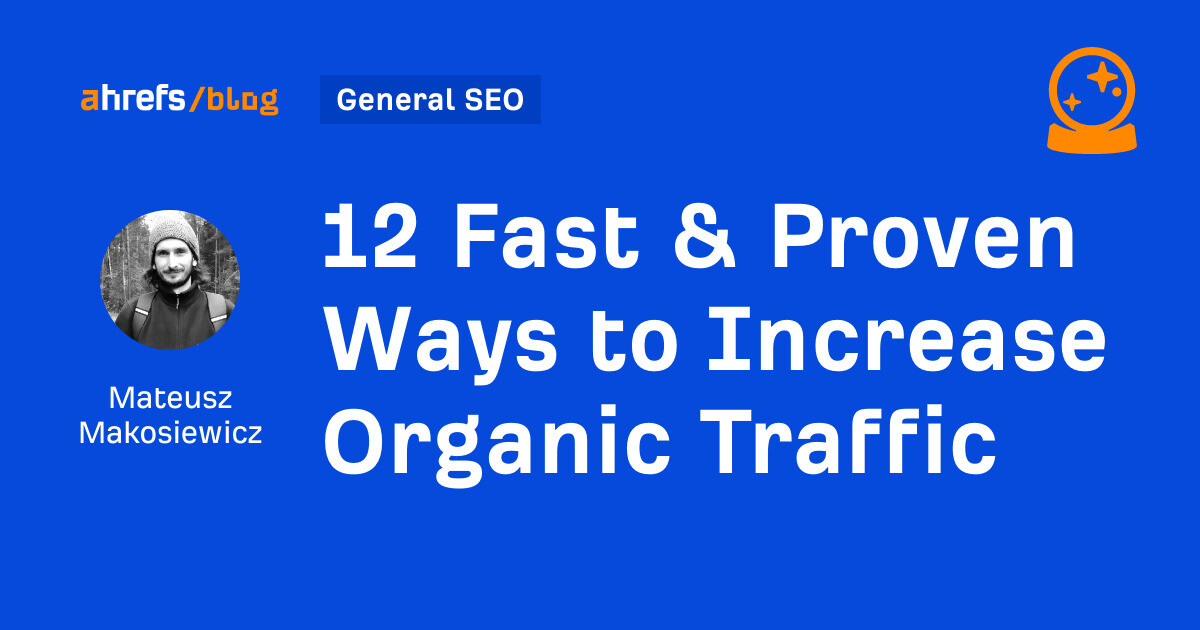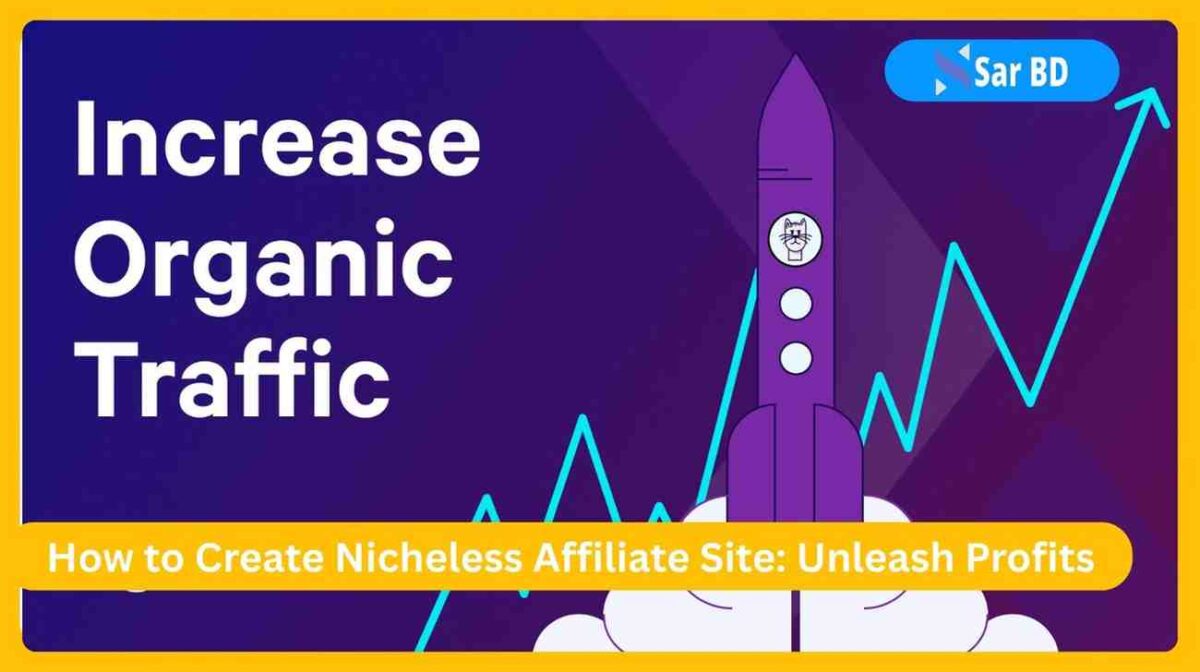How to Increase Organic Traffic Fast: Proven Strategies
How to Increase Organic Traffic Fast: Proven Strategies – Are you struggling to get more visitors to your website? You’re not alone.
Many website owners dream of seeing a spike in organic traffic but feel lost on how to achieve it. Imagine waking up to see your website bustling with new visitors, all interested in what you have to offer. Wouldn’t that be incredible?
This isn’t just a dream—it’s entirely possible, and you can start seeing results faster than you might think. You’ll discover actionable strategies designed to boost your organic traffic quickly. Get ready to transform your website into a hub of activity and engagement. Stay with us, and learn how to turn those dreams into reality.
Optimize For Search Engines
Increasing organic traffic quickly is a top priority for many website owners. By optimizing for search engines, you can significantly enhance your visibility and attract more visitors. This process involves understanding what search engines are looking for and tailoring your website to meet those needs. Let’s dive into some essential strategies.
Keyword Research
Keyword research is the cornerstone of any successful SEO strategy. Start by identifying the words and phrases your target audience uses to search for your products or services. Tools like Google Keyword Planner and Ahrefs can help you discover relevant keywords with high search volume and low competition.
Once you have a list, incorporate these keywords naturally throughout your content. Avoid keyword stuffing, as it can lead to penalties from search engines. The goal is to provide value to your readers while signaling to search engines what your page is about.
On-page Seo Tactics
On-page SEO is all about optimizing individual pages to rank higher and earn more relevant traffic. Start with your titles and headings. Make sure they are descriptive, include your primary keyword, and are appealing to readers.
Another critical element is your content. Ensure it is well-structured, informative, and directly addresses the needs of your audience. Use bullet points, images, and short paragraphs to make your content easy to read.
Don’t forget internal linking. Linking to other pages on your website can help distribute page authority and keep readers engaged longer. This can reduce bounce rates and increase the time visitors spend on your site.
Meta Tags And Descriptions
Meta tags and descriptions play a crucial role in how your pages are displayed in search engine results. Your meta title should be concise, include your main keyword, and compel users to click through to your site.
Meta descriptions, though not a direct ranking factor, can influence click-through rates. Write clear, compelling descriptions that accurately summarize your page content and include a call to action.
Regularly review and update your meta tags and descriptions to ensure they remain relevant and aligned with your content. This can help improve your visibility and engagement over time.
Have you ever noticed that some websites just seem to pop up first on Google? That’s not luck—it’s strategy. By optimizing your site for search engines, you too can join the ranks of those that attract a steady stream of organic traffic. What changes will you make today to improve your search engine rankings?

Credit: www.sproutworth.com
Create High-quality Content
Craft high-quality content to boost organic traffic quickly. Focus on engaging, informative, and clear writing. This attracts more visitors to your site.
Creating high-quality content is a powerful way to boost your website’s organic traffic. Crafting content that speaks to your audience’s needs can set you apart from the competition. But how do you ensure your content is top-notch and engaging? Let’s dive into some strategies.
Engaging Blog Posts
Blog posts are a cornerstone of high-quality content. Start by understanding your audience’s interests and pain points. Address these with clear, concise writing. Use a friendly tone, and don’t shy away from injecting some personality. Share stories that resonate. Once, I wrote about a simple weekend project that skyrocketed in shares because it connected with readers’ daily lives. Keep paragraphs short—one idea per paragraph. This makes it easier for readers to follow along without getting overwhelmed.
Visual Content Integration
Did you know that people process images faster than text? Integrating visuals can make your content pop. Use high-quality images, infographics, and videos to complement your text. For example, if you’re writing about travel destinations, include stunning photos or video tours. This not only engages your audience but also keeps them on your page longer. Tools like Canva can help you create professional-looking visuals without a design degree. Experiment to see what resonates best with your readers.
User-generated Content
Your audience can be your best content creators. Encourage them to share their stories, reviews, or photos related to your niche. This not only builds a community but also provides authentic content that others can relate to. Consider running contests or challenges. Prompt your followers to share their experiences or tips. Feature their content on your blog or social media. This not only saves you time but also makes your content more relatable. Have you ever thought about how powerful your readers’ voices can be? Their unique perspectives can add depth to your content, boosting both engagement and trust.
Enhance Website Performance
Boosting organic traffic quickly involves improving website speed and optimizing content for search engines. Focus on creating valuable, keyword-rich articles that engage users. Regularly update content to keep it relevant and informative, attracting more visitors naturally.
Enhancing your website’s performance can quickly boost organic traffic. A well-optimized site attracts users and keeps them engaged. Focus on key areas that influence user experience and search engine rankings. Improving performance is crucial for both mobile and desktop users. Let’s explore essential aspects of website performance.
Page Load Speed
Page load speed affects user retention. Slow websites frustrate visitors, leading to higher bounce rates. Compress images to reduce file sizes. Use a content delivery network (CDN) to distribute resources efficiently. Minimize CSS and JavaScript files for faster loading. Prioritize above-the-fold content for quicker visibility. Regularly test your site’s speed with tools like Google PageSpeed Insights. Aim for a load time of under three seconds.
Mobile-friendliness
Mobile-friendliness is crucial in today’s digital world. Many users browse on mobile devices. Ensure your site adapts to various screen sizes. Use responsive design techniques. Google favors mobile-friendly sites in search rankings. Test your site on different devices and browsers. Make navigation easy and intuitive. Avoid flash elements that don’t work on mobile. Check touch elements are spaced for easy clicking.
User Experience Design
User experience design keeps visitors on your site. A clean, organized layout guides users naturally. Use clear headlines and concise text. Make sure the design aligns with your brand image. Implement intuitive navigation for easy access to information. Use high-quality images and graphics. Ensure your call-to-action buttons are visible. Regularly update content to keep it relevant and engaging. Test user experience through feedback and analytics.
Leverage Social Media Platforms
Social media platforms boost organic traffic swiftly. Share engaging content that resonates with your audience. Encourage interaction through polls and comments.
Increasing organic traffic quickly can be a challenging task. However, leveraging social media platforms can be a game-changer. These platforms are more than just a space for sharing photos and updates. They are powerful tools that can significantly boost your website’s visibility. With the right strategies, you can drive a substantial amount of organic traffic from social media, converting casual browsers into loyal visitors.
Content Sharing Strategies
Sharing content effectively on social media requires creativity and planning. Diversify the types of content you share—articles, videos, infographics, and podcasts—to keep your audience engaged. Use eye-catching visuals and compelling headlines to draw attention. You should also post at times when your audience is most active. This increases the likelihood of engagement. Tools like Buffer can help schedule posts and analyze the best times to share content. Don’t forget to include direct links to your website in your posts. Make it easy for your followers to visit your site with just one click.
Engage With Your Audience
Engagement is the heart of social media success. Respond promptly to comments and questions on your posts. This shows your audience that you value their input and are actively listening. Create polls, ask questions, and encourage discussions to foster a community feel. When people feel connected, they are more likely to visit your website regularly. Share user-generated content to show appreciation for your followers. This not only engages your current audience but also attracts new ones eager to participate.
Influencer Collaborations
Collaborating with influencers can dramatically increase your reach. Identify influencers in your niche who align with your brand values. Their endorsement can lend credibility and attract their followers to your content. Consider starting with micro-influencers. They often have highly engaged audiences, which can lead to better conversion rates. Collaborations can be in the form of shoutouts, guest posts, or even co-hosted events. Make sure the partnership feels authentic. Audiences can easily spot forced collaborations, which can harm your brand’s reputation. Always aim for genuine, mutually beneficial relationships. Can social media be the secret weapon in your organic traffic strategy? The possibilities are endless, but it’s up to you to take the first step. Use these strategies to make your social media platforms work for you today.
Utilize Email Marketing
Email marketing is a powerful tool to boost organic traffic quickly. By engaging with your audience directly, you can drive more visits to your site. This approach helps in building a loyal customer base and improving brand visibility. It bridges the gap between your content and potential readers, encouraging them to explore your offerings. Let’s dive into how you can utilize email marketing effectively.
Build A Subscriber List
A strong subscriber list is key to successful email marketing. Start by offering valuable content that encourages visitors to subscribe. Use lead magnets like eBooks or exclusive tips to attract subscribers. Make the signup process simple and visible on your site. This helps in gathering a substantial list of interested users.
Effective Email Campaigns
Create email campaigns that resonate with your audience. Focus on providing insightful content that meets their needs. Structure your emails well with clear headings and concise text. Use engaging subject lines to increase open rates. Encourage clicks by including links to your site.
Personalization Techniques
Personalization makes emails feel tailored and relevant. Use subscriber names and past interactions to customize emails. Segment your list based on interests or behaviors. This ensures each recipient receives content that truly matters to them. Personalization boosts engagement and drives traffic effectively.
Implement Link Building
Boosting organic traffic quickly involves smart link building strategies. Quality backlinks enhance website authority and visibility. This technique attracts more visitors, improving search engine rankings effectively.
Increasing organic traffic quickly can seem like a daunting task, but implementing link building strategies can make a significant difference. Link building is about creating relationships and connections that boost your site’s visibility in search engines. The key is to approach it with a strategy that is both effective and sustainable.
Guest Blogging
Guest blogging is a brilliant way to gain visibility. By writing for other reputable websites, you can introduce your content to a broader audience. This not only brings direct traffic but also enhances your credibility. Have you ever considered how guest blogging can position you as an expert in your field? Start by identifying blogs that align with your niche and audience. Reach out with a personalized pitch, offering unique insights or tips that would interest their readers.
Backlink Strategies
Backlinks are like votes of confidence from other websites. The more quality backlinks you have, the more search engines trust your site. But not all backlinks are created equal. Focus on obtaining links from authoritative sites. Tools like Ahrefs or SEMrush can help you analyze and target potential sites for backlinks. Have you checked where your competitors are getting their backlinks? This can give you a roadmap to follow, helping you replicate successful strategies.
Networking With Industry Leaders
Building relationships with industry leaders can open doors to new opportunities. It’s not just about what you know, but who you know. Networking can lead to collaborations that benefit both parties. Reach out to industry experts through social media or at conferences. Share valuable insights and engage in meaningful conversations. As these relationships grow, the potential for organic backlinks increases. Are you leveraging your existing connections to build your backlink profile? Sometimes, a simple ask can lead to a valuable link or a guest post opportunity. Remember, networking is a two-way street. Offer help and value to others, and they’ll be more likely to reciprocate.
Analyze And Adjust
Quickly increasing organic traffic involves analyzing website data and adjusting strategies. Identify high-performing content and optimize for keywords. Make necessary improvements based on insights to enhance visibility and attract more visitors.
Increasing your website’s organic traffic isn’t just about creating great content—it’s also about constantly refining your approach. This is where the crucial step of “Analyze and Adjust” comes into play. Think of it like tuning a musical instrument; even a slight adjustment can make a significant difference. By scrutinizing your website’s performance and making necessary changes, you can attract more visitors quickly. Let’s dive into some actionable steps.
Monitor Traffic Analytics
Begin by regularly checking your traffic analytics. Tools like Google Analytics offer insights into which pages are performing well and which aren’t. You might be surprised to find that an old blog post is still drawing significant traffic. Understanding these patterns helps you make informed decisions about where to focus your efforts. Look at metrics such as bounce rate, average session duration, and pages per session. Are users quickly leaving your site? That’s a red flag. These metrics can guide you toward content that needs improvement or topics that resonate well with your audience.
Identify Content Gaps
Once you understand your current traffic, the next step is identifying content gaps. This means figuring out what your audience is searching for that you haven’t covered yet. Perhaps your readers are interested in a specific aspect of your niche that you haven’t explored. Use keyword research tools to discover these opportunities. Imagine finding a popular topic that you haven’t addressed yet—it’s like striking gold. Filling these gaps not only attracts new visitors but also establishes you as an authority in your field.
A/b Testing For Improvements
A/B testing is an excellent way to fine-tune your content and design. Suppose you have two ideas for a blog post title. Instead of guessing which one will perform better, test them both. By directing half your audience to one version and half to the other, you can see which performs better. Remember when I changed the color of a call-to-action button from blue to green? It led to a 15% increase in clicks. Small changes can yield big results. Don’t just test once; make it a regular part of your strategy to continually improve your site’s performance. Analyzing and adjusting might seem like a never-ending task, but it’s vital for growth. What small changes can you make today that might lead to a big difference tomorrow?

Credit: ahrefs.com

Credit: www.thanksweb.in
Frequently Asked Questions
What Are Quick Ways To Boost Organic Traffic?
Boost organic traffic by optimizing your website for SEO, creating high-quality content, and leveraging social media. Use keyword research to target relevant search terms. Improve site speed and ensure mobile responsiveness. Building backlinks from credible sources can also help increase your site’s visibility and traffic.
How Does Content Quality Affect Organic Traffic?
High-quality content attracts more visitors and encourages sharing, increasing organic traffic. It improves your site’s authority, leading to better search rankings. Engaging, informative content keeps readers on your site longer, reducing bounce rates. Regularly update content to maintain relevance and appeal to your target audience.
Can Social Media Enhance Organic Traffic?
Yes, social media can significantly boost organic traffic. Sharing content on platforms like Facebook, Twitter, and LinkedIn increases visibility. Engaging with users and encouraging shares can attract more visitors to your site. Use social media to promote new content and interact with your audience to build a loyal following.
Why Is Seo Important For Organic Traffic?
SEO improves your website’s visibility in search engine results, increasing organic traffic. It involves optimizing content, using relevant keywords, and ensuring site structure is search-friendly. Effective SEO strategies help attract more visitors, enhance user experience, and improve your site’s credibility and authority.
Conclusion
Improving organic traffic requires patience and strategy. Start with quality content. Optimize your website for search engines. Engage your audience through social media. Keep track of analytics regularly. Identify what works best for your site. Make adjustments based on data.
Don’t overlook the power of backlinks. Collaborate with reputable sites for mutual benefit. Update content frequently to stay relevant. Experiment with different techniques. Monitor results closely. Stay committed to your goals. Gradual changes lead to sustainable growth. Remember, consistency is key.
Better traffic brings more opportunities. Keep learning and adapting. Organic growth is achievable with effort.


